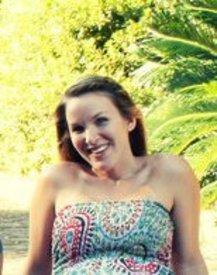How do you measure beans?

sunshinestate
Posts: 110 Member
If I want to measure a 1/2 cup of chickpeas, do I just use a measuring cup, or do I weigh 4 oz on a scale? I want to get every calorie worth! There is empty space in that cup between chickpeas! :-)
How do you do it?
How do you do it?
0
Replies
-
I personally never use cups, but that's probably because I'm in the UK.
If I were you I'd weigh it out, much more accurate0 -
Are we talking dried beans or beans out of a can?
Have a cup of them. Beans are low in calories & high in fiber. You're more likely to stick to your diet if you aren't starving!0 -
If I want to measure a 1/2 cup of chickpeas, do I just use a measuring cup, or do I weigh 4 oz on a scale? I want to get every calorie worth! There is empty space in that cup between chickpeas! :-)
How do you do it?
Four ounces of beans does not necessarily = half a cup. You're comparing liquid measurements to solid.0 -
4 ounces in a cup is a liquid measurement. You would want to find out how many grams your serving should be and then weigh it.
Example: according to this site a serving size is a cup or 164 grams (http://nutritiondata.self.com/facts/legumes-and-legume-products/4326/2)
There are approximately 28 grams in an ounce so divide 164 by 28 and it equals 5.85 ounces by weight (the actual conversion is a little less)
So a 1/2 cup of garbanzo beans would be 82 grams or about 3 ounces by weight. ... does that make sense? Good luck!0 -
Thanks guys! I can't wait until I get a digital scale. It seems like weight is far more accurate than using a cup!0
-
Thanks guys! I can't wait until I get a digital scale. It seems like weight is far more accurate than using a cup!
It is. But make sure you don't confuse solids and liquids.0 -
Thanks again - so measure solids in grams, and liquids in ounces.0
-
Thanks again - so measure solids in grams, and liquids in ounces.
Not necessarily...There's ounces (weight) and there's fluid ounces (volume). For fluid ounces, you will need a measuring cup. For ounces, you need to weigh on a scale. On my digital scale - and I'm sure most are like this - you have the option of weighing in grams or ounces, so you can toggle back and forth for whichever unit of measure your food is listed as in the database.
I highly recommend a scale for measuring your food. It's much easier than using measuring cups every time, and you dirty up a lot fewer dishes since you can weigh right into the dish you will eat out of. 0
0 -
I learned this trick waayyy back from grade 9 home ec, not sure if it works but I've been doing it this way for a while so I hope so...
Get a big glass measuring cup (I use a 2 cup) and fill it up to 1 cup and then take your beans and so if you want to have 1/2 cup of beans then keep putting the beans in until the water level reaches 1.5 and then there you go! Some of the quantities may surprise you. I measured 1 cup of chick peas thinking the spaces between the peas wasn't a lot.. But it turned out that I was missing out on double.0 -
I learned this trick waayyy back from grade 9 home ec, not sure if it works but I've been doing it this way for a while so I hope so...
Get a big glass measuring cup (I use a 2 cup) and fill it up to 1 cup and then take your beans and so if you want to have 1/2 cup of beans then keep putting the beans in until the water level reaches 1.5 and then there you go! Some of the quantities may surprise you. I measured 1 cup of chick peas thinking the spaces between the peas wasn't a lot.. But it turned out that I was missing out on double.
While technically this is true, the cup serving listed on packaging is including those air pockets in the measurement. Another reason why weighing is more accurate.0
This discussion has been closed.
Categories
- All Categories
- 1.4M Health, Wellness and Goals
- 398.2K Introduce Yourself
- 44.7K Getting Started
- 261K Health and Weight Loss
- 176.4K Food and Nutrition
- 47.7K Recipes
- 233K Fitness and Exercise
- 462 Sleep, Mindfulness and Overall Wellness
- 6.5K Goal: Maintaining Weight
- 8.7K Goal: Gaining Weight and Body Building
- 153.5K Motivation and Support
- 8.4K Challenges
- 1.4K Debate Club
- 96.5K Chit-Chat
- 2.6K Fun and Games
- 4.8K MyFitnessPal Information
- 12 News and Announcements
- 21 MyFitnessPal Academy
- 1.5K Feature Suggestions and Ideas
- 3.2K MyFitnessPal Tech Support Questions






